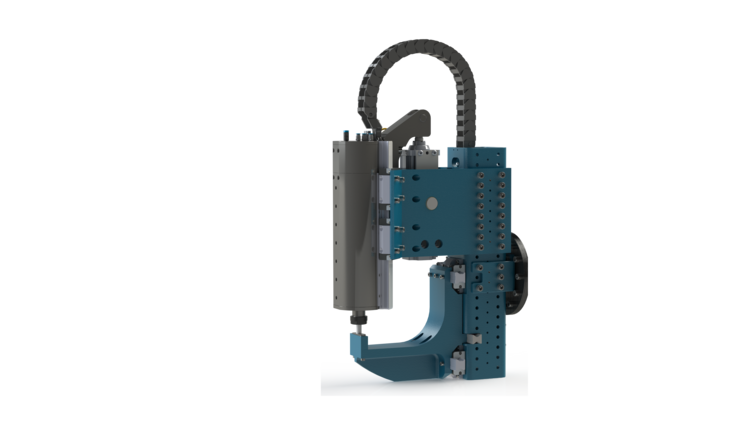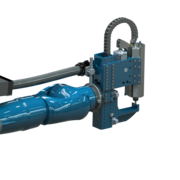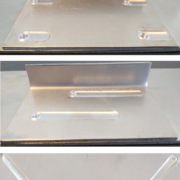Robotic Friction Stir Welding Gun for the Creation of High Quality Quilted Seams
Abstract
An extensively developed friction stir welding tool designed for high-quality and cost-effective joining technology for light metals
Fields of application
The welding gun was developed primarily for use in modern construction lines, e.g. in automotive production.
Background
Friction stir welding was developed in England in the 1990s. In this process, the materials to be joined are joined by "kneading" rather than by melting. This results in many advantages over other welding methods, the technology is more ecological and safer.
Problem
Despite process advantages, friction stir welding has so far been underrepresented in industry due to the lack of flexible, economical plant technology. Particularly problematic are the high process forces, which require a counter support on the tool. In addition, the high process time per weld seam has been problematic up to now.
Solution
The friction stir welding gun from the Materials Testing Institute of the University of Stuttgart can be easily integrated into production lines. The so-called "Steppwelder" is a welding gun for conventional 6-axis industrial robots and has the same size as other welding and joining guns used for vehicle production. This means that curved workpieces can also be joined together. Most importantly, spot welds can also be replaced by short line welds with higher joint strength.
Thanks to a specially designed, flexible counter support, curved manufacturing geometries are possible with optimum force flow. The welding gun produces a short-stitched seam in one step, and long, material-tight multi-material joints can be produced by stringing the stitched seams together. The process time was massively reduced through suitable design of the components and the special counter holder construction. The current version of the quilting welder produces a 50 cm long seam in 1.5-2 seconds and can thus meet the cycle times required in automotive production, compared with clinching.
Advantages
- Joining of lightweight materials such as high-strength aluminum alloys (5XXX, 6XXX, 7XXX) and magnesium is possible
- Mixed joints are possible, e.g. of aluminum and steel
- Very high weld quality
- Hardly any heat, no smoke and no spatter development in the welding process
- No tendency to hot cracking with high-strength aluminum alloys
- Low energy consumption
- No filler metals necessary
- Gas- and fluid-tight weld seams can be produced
- Can be used for spot welds, line welds (lockstitch), or 3D welds
- Welding gun weight of <200 kg enables use with conventional industrial robots
- Relatively inexpensive system technology
Literature and Links
Walz, D., Werz, M., & Weihe, S. (2021). A New Concept for Producing High Strength Aluminum Line-Joints in Car Body Assembly by a Robot Guided Friction Stir Welding Gun. In Advances in Automotive Production Technology–Theory and Application (pp. 361-368). Springer Vieweg, Berlin, Heidelberg.
Walz, D.; Werz, M.; Weihe, S. Entwicklung und Erprobung einer neuartigen Rührreibschweißzange. In: DVS CONGRESS Große Schweißtechnische Tagung. Essen, 2021.



